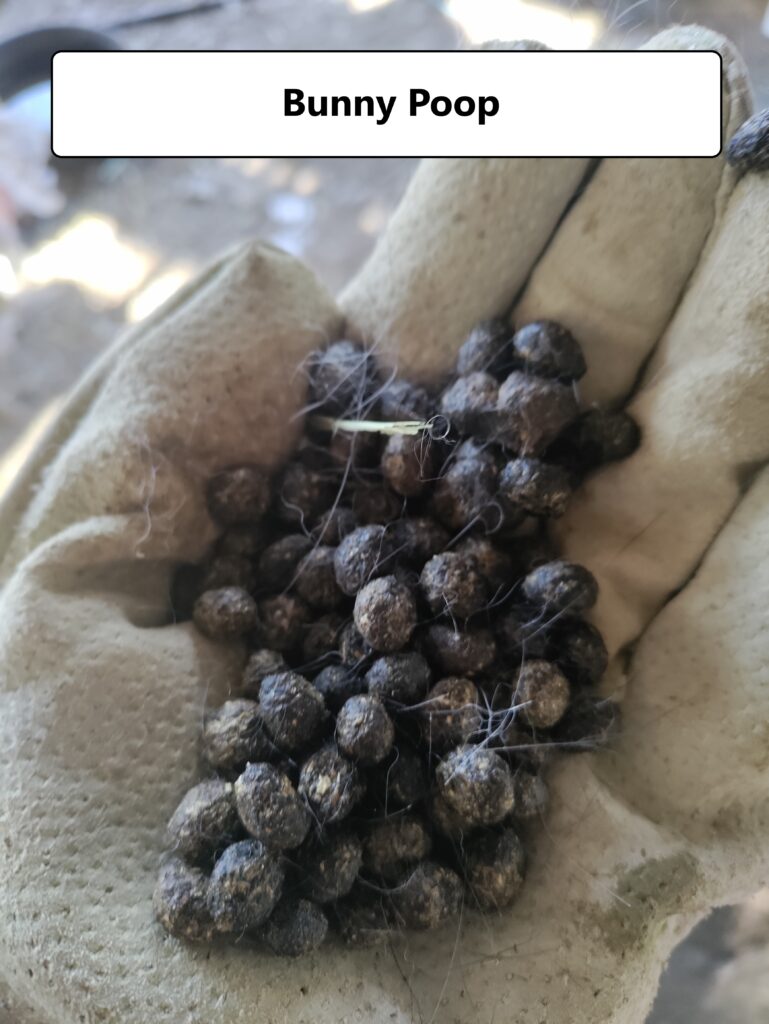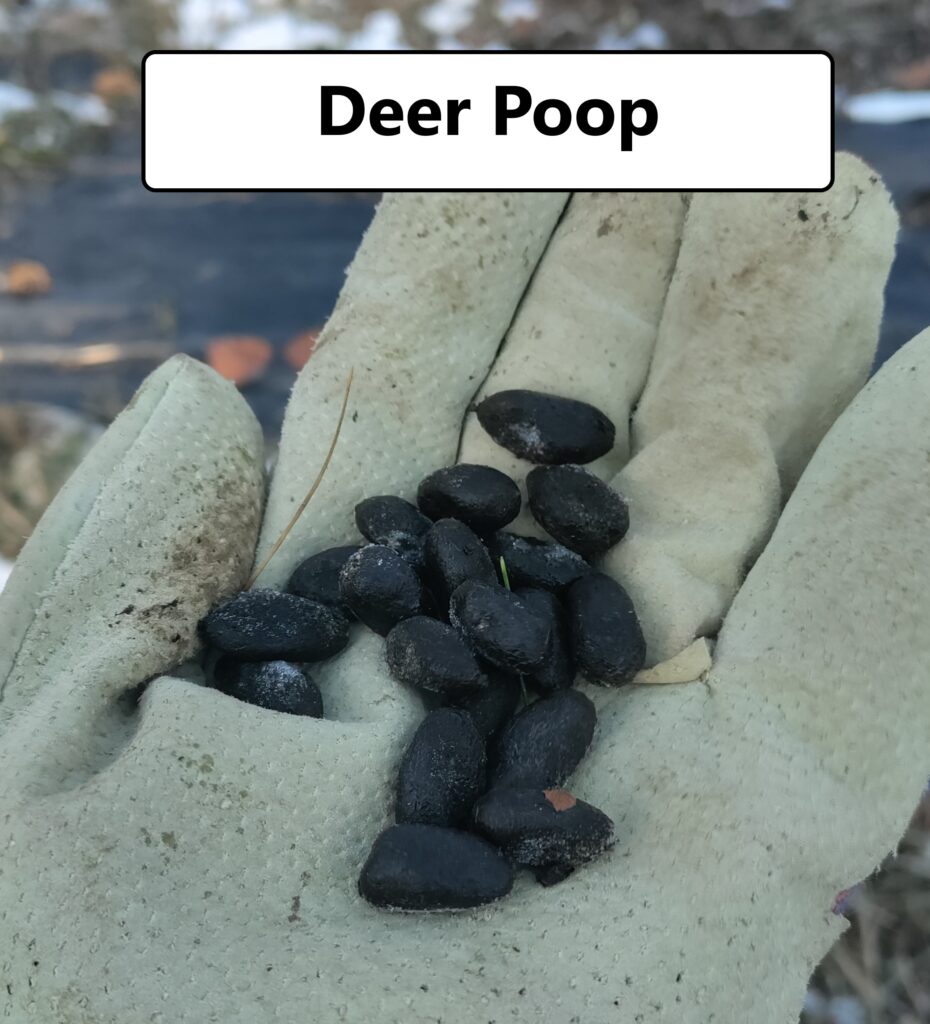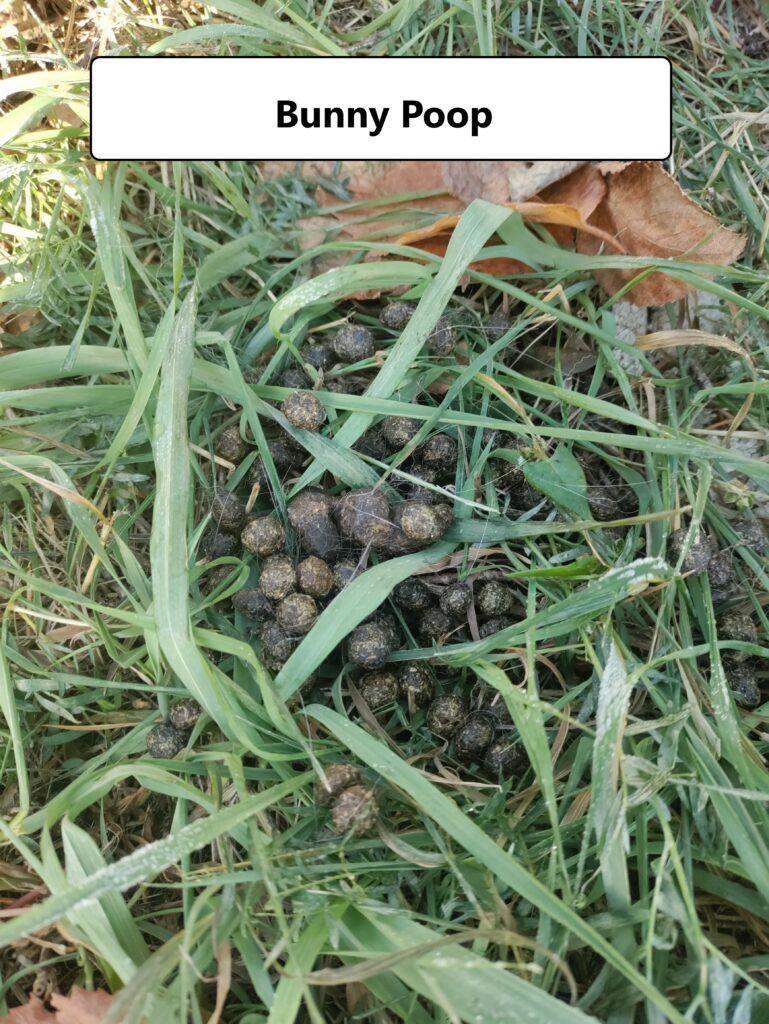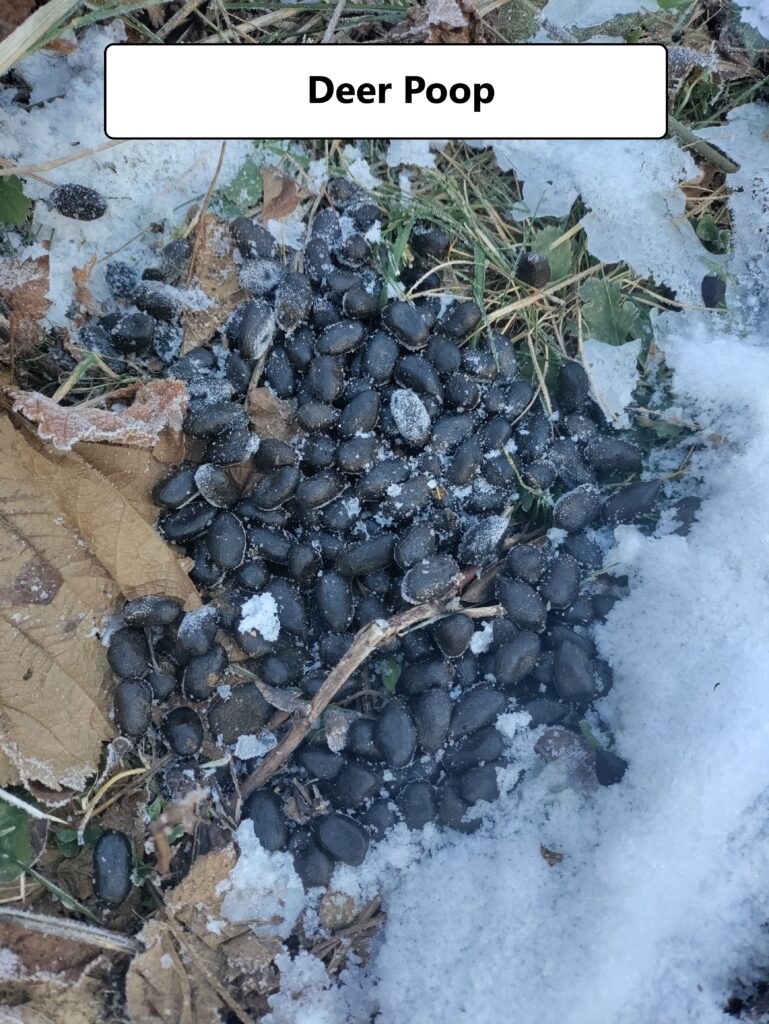When it comes to different types of animal waste, it’s easy to get confused about what belongs to which animal. Two types of poop that may cause confusion are bunny poop and deer poop. Although they may look similar to the untrained eye, the two have significant differences.
TL:DR
Bunny poop and deer poop have distinct differences in size, shape, colour, texture, and nutrient content. They can be used as natural fertilizers and are indicators of wildlife presence, but they can also carry harmful bacteria and parasites. Handling and disposing of them correctly is important to avoid health hazards.


Size and Shape:
One of the most noticeable differences between bunny poop and deer poop is their size and shape. Bunny poop, also known as rabbit droppings, is typically small and round, resembling a pea. The size of bunny poop can range from 1/8 inch to 1/2 inch in length, depending on the size of the rabbit. However, on average, bunny poop is around 1/4 inch in length and 1/8 inch in diameter.
Bunny poop is often found in clusters, and a single rabbit may produce up to 500-600 pellets per day. These pellets are generally uniform in size and shape, making them easy to identify.
On the other hand, deer poop is often more elongated and oval-shaped, about the size of a grape. The size of deer poop can vary based on the deer’s size and diet, but on average, it’s about 1/2 to 3/4 inch in length and 1/4 to 1/2 inch in diameter.
Deer poop is usually found individually and can be scattered throughout a particular area. However, you may also find multiple droppings in the same area, indicating that a deer was browsing or grazing in that spot for a while.
The shape of bunny poop and deer poop is also different. Bunny poop is usually perfectly round, while deer poop is more elongated and often slightly pointed at one end. Additionally, deer poop may have a slight groove in the middle due to the way the deer’s digestive system works.
In short, bunny poop is small, round, and found in clusters, while deer poop is larger, oval-shaped, and usually found individually.
Colour:
While bunny poop is generally a uniform dark brown colour, the colour of deer poop can vary based on their diet, the time of year, and other factors.
Bunny poop is usually dark brown and may have a slightly shiny appearance. The colour of bunny poop can vary depending on what the rabbit is eating, but it’s generally a uniform brown colour.
Deer poop, however, can vary in colour based on their diet. Deer that are feeding on a diet rich in leaves and grass will produce poop that is a dark brown or black colour. However, if deer eat a lot of fruits or berries, their poop may appear reddish or yellowish.
Additionally, the colour of deer poop can change throughout the year. In the fall, for example, deer may consume large amounts of acorns, which can cause their poop to have a lighter, tan colour. In the winter, deer eat bark and twigs, so their poop may appear more fibrous and have a lighter, almost grayish colour.
The colour of bunny poop and deer poop can also be influenced by other factors, such as the animal’s health or the weather. For example, if a rabbit is sick, its poop may appear lighter in colour or have a different texture. If it’s been raining heavily, deer poop may appear more watered down and have a lighter colour.
Texture:
Bunny poop is typically small, dry, and uniform in texture, while deer poop is a bit softer and less uniform.
The texture of bunny poop and deer poop is another characteristic that can help distinguish between the two. Bunny poop, is usually small, dry, and somewhat hard in texture. It has a pellet-like appearance and is composed of mostly undigested plant material.
The texture of bunny poop is generally uniform and consistent, as it’s composed of small, round pellets. The pellets are typically dry and don’t stick together, making them easy to pick up and dispose of.
Deer poop, on the other hand, has a slightly different texture. It’s usually a bit softer and less uniform than bunny poop, as it combines partially digested plant material and fecal matter. Deer poop may also have a slightly sticky texture, which can make it harder to pick up and dispose of.
The texture of deer poop can also vary based on the deer’s diet. If deer eat a lot of leaves and grass, their poop may be softer and more fibrous in texture. If they consume many fruits or berries, their poop may be firmer and more compact.
Digestive System:
Understanding the differences in the digestive systems of rabbits and deer can provide valuable insights into their dietary preferences and health. For example, find rabbit droppings in your garden. It may indicate that rabbits are feeding on your plants. Finding deer poop in the same area could suggest that deer are eating your flowers or vegetables.
The digestive system of rabbits and deer is quite different, which leads to some noticeable differences in the characteristics of their poop. Rabbits are herbivores, meaning they eat only plants, while deer are omnivores, which means they eat plants and other animals.
Rabbits have a unique digestive system that allows them to extract as much nutrition as possible from their food. They have a specialized organ called the cecum at the beginning of the large intestine. The cecum contains diverse bacteria, yeast, and other microorganisms that help break down the tough plant fibres in the rabbit’s diet.
After the food is partially digested in the stomach, it passes through the small intestine, where most nutrients are absorbed. The remaining undigested material, along with the microorganisms from the cecum, then passes into the large intestine and is formed into small, round pellets that make up rabbit poop.
In contrast, deer have a more conventional digestive system similar to other mammals. Their food passes through the stomach, where it is partially digested, and then moves through the small intestine, where most nutrients are absorbed. The remaining material passes into the large intestine, forming deer poop.
Because of the differences in their digestive systems, rabbit poop is usually smaller and drier than deer poop. It’s also composed mostly of undigested plant material, while deer poop contains a mix of partially digested plant material and fecal matter.
Nutrient Content:
Understanding the nutrient content of their poop can be useful for gardening and also provides insights into the health of local ecosystems.
The nutrient content of bunny poop and deer poop varies due to the differences in their digestive systems and diets. As herbivores, rabbits consume a fibre-rich diet, important for maintaining a healthy digestive system. Their poop contains a high concentration of nutrients essential for plant growth, including nitrogen, phosphorus, and potassium.
Rabbit poop is one of the best natural fertilizers you can use in your garden, as it helps to enrich the soil and promote healthy plant growth. It’s also relatively easy to handle, as it’s dry and doesn’t have a strong odour.
Deer, on the other hand, have a more varied diet. This means their poop may contain a wider mix of nutrients from both sources. The nutrient content of deer poop can also vary depending on the season and the food they eat.
While deer poop can also be used as a natural fertilizer, it’s generally not as nutrient-dense as rabbit poop. This is because deer have a more complex digestive system designed to extract as much nutrition as possible from food, rather than excreting it in their poop.
Smell:
One of the most notable differences between bunny poop and deer poop is their smell. Bunny poop is generally considered to have a mild, somewhat earthy scent that is not very strong. In fact, many people may not even notice the smell of bunny poop at all, especially if it is fresh.
In contrast, deer poop has a stronger and more unpleasant odour. The smell can vary depending on various factors, including the diet of the deer and how long the poop has been sitting out. Deer poop sitting for a while can develop a very pungent, almost rotting smell.
Deer have a more complex digestive system designed to extract as much nutrition as possible from a wider range of foods. This can lead to a more varied and more pungent mix of waste products in their poop.
Another factor contributing to the smell of deer poop is the presence of bacteria and other microorganisms that help break down the waste products in the digestive system. These microorganisms can produce a range of gases and odours as they work to contribute to the smell of the poop.


Fertilizer:
As mentioned earlier, one of the most valuable characteristics of both bunny poop and deer poop is their use as a natural fertilizer. Both types of poop are rich in nutrients that can be beneficial for plant growth and can be used to fertilize gardens and lawns.
Bunny poop is an especially good fertilizer, as it contains a high nitrogen, phosphorus, and potassium concentration. These nutrients are essential for plant growth and are often found in commercial fertilizers. However, unlike commercial fertilizers, bunny poop is a natural and environmentally friendly alternative that doesn’t contain harmful chemicals or additives.
To use bunny poop as a fertilizer, it’s important to let it dry out completely first. Fresh bunny poop can be too high in nitrogen and can potentially burn your plants, so it’s best to let it age and dry out first. Once it’s dry, sprinkle it directly onto your soil or mix it in with your compost.
Deer poop can also be used as a fertilizer, but it’s generally not as nutrient-dense as bunny poop. However, it can still provide some valuable nutrients for your plants, and it can be a good option if you don’t have access to bunny poop or if you want to mix up the nutrients that you’re using in your garden.
Like bunny poop, it’s best to let deer poop age and dry out before using it as a fertilizer. If you’re using it in your garden, you can either sprinkle it on top of your soil or mix it into your compost.
Health Hazards:
Link to post “Is Bunny Poop Toxic”
While bunny poop and deer poop have many useful characteristics, it’s important to be aware of the potential health hazards associated with handling or coming into contact with these types of animal waste.
Both bunny poop and deer poop can carry a variety of bacteria and parasites that can be harmful to humans. For example, both types of poop can carry E. coli, salmonella, and other harmful bacteria that can cause gastrointestinal illness or other infections.
In addition, bunny poop can also carry tularemia, a bacterial disease that can cause fever, fatigue, and other symptoms. This disease is relatively rare in humans, but it can be transmitted through contact with infected animals or their waste.
Deer poop can also carry ticks, which transmit Lyme disease and other tick-borne illnesses. Suppose you come into contact with deer poop. In that case, taking precautions to avoid tick bites, such as wearing protective clothing and using insect repellent, is important.
FAQs
Q. Can you tell the difference between bunny poop and deer poop just by looking at it?
A. Yes, once you know what to look for, there are several differences between bunny poop and deer poop that can help you distinguish between the two.
Q. Is it safe to use bunny poop or deer poop as a fertilizer for my garden?
A. Yes, bunny poop and deer poop can both be used as natural fertilizers for your garden. However, it’s important to take precautions to avoid the risks of bacterial contamination and ensure that the poop is fully composted or aged before using it on edible crops.
Q. Can bunny poop or deer poop attract other wildlife to my yard or garden?
A. Yes, bunny poop and deer poop can both attract other wildlife to your yard or garden, as they can serve as a source of food or a marker for other animals. If you’re trying to deter other animals from your property, it may be best to remove bunny poop or deer poop as soon as possible.
Q. Can bunny poop or deer poop be harmful to my pets?
A. Yes, both bunny poop and deer poop can carry bacteria and parasites that can be harmful to pets. If your pet comes into contact with bunny poop or deer poop, it’s important to wash them thoroughly and monitor them for any signs of illness.
Q. How can I dispose of bunny poop or deer poop safely?
A. Bunny poop and deer poop can both be disposed of safely by placing them in a compost pile or burying them in the ground. It’s important to avoid putting the waste in the trash or dumping it in natural water sources, as this can increase the risk of contamination and pollution.